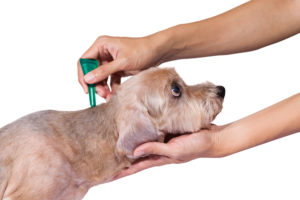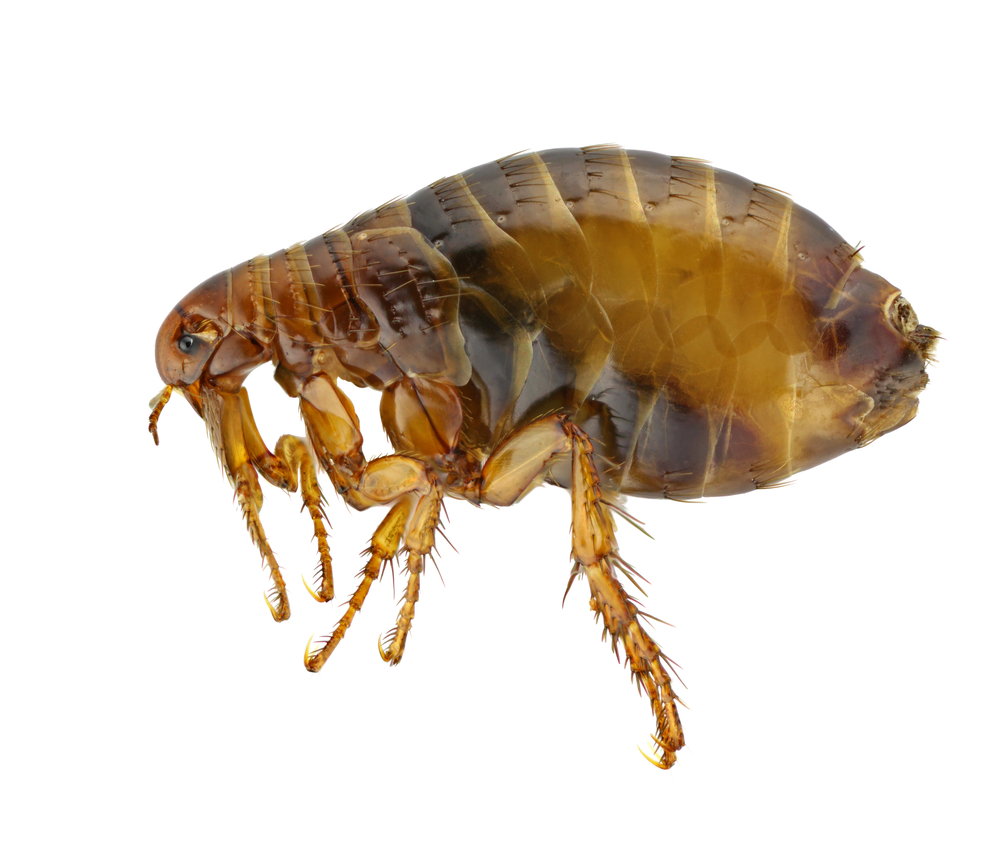
Fleas go through four lifecycle stages, the egg, larva, pupa and the adult insect. Fleas must feed on blood before they can become capable of reproduction. Female fleas can produce up to 50 eggs a day which is about 1500 in their lifetime meaning they are capable of establishing themselves very quickly if not controlled. Certain types of fleas can produce up to 5000 eggs in their lifetime.
Fleas can live for many months without a host, so homes can become infested long after a pet has left. It is estimated that 95% of an infestation of fleas actually live off the host and in the home meaning you may need to treat the home as well as the animal. Fleas can also pass on certain infections like Myxomatosis in rabbits.
The best control method is to treat your pets with flea treatments. There are many different types which are best suited for different animal’s form drops to collars. It is best to consult your pet store or vet to get advice on the best treatment for your pet. You should only use treatments for the animal type they are designed for. Some dog flea treatments are toxic to cats so make sure you use the right one.
If fleas are in your home, you can buy sprays and powders to treat a home. Other control methods can be to keep their bedding clean and vacuum furniture, floors and under furniture to help to break the lifecycle. Once you finish vacuuming, throw the dust bag away.
To check your pet for fleas, you can first observe them to see if they are scratching which can be an indicator that they may have fleas. It may also be that you have bites on your skin. Other signs can be an allergic reaction on the skin as pets can be allergic to the salvias of the flea.
You can use a fine-tooth flea comb or just look closely at the skin for tiny dark specs in their fur or you may see small black or brown insects moving about. Where you use a flea comb the fleas or droppings will be seen on the comb, put these on a white surface to see them clearly. If you add a few drops of water and the droppings turn reddish brown, it is likely they have fleas.
